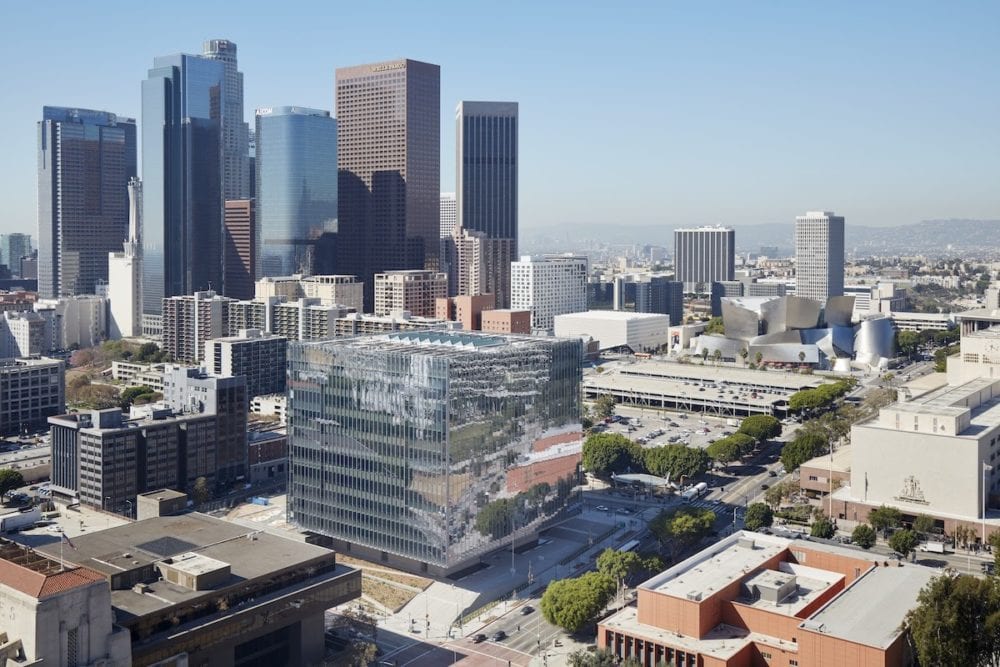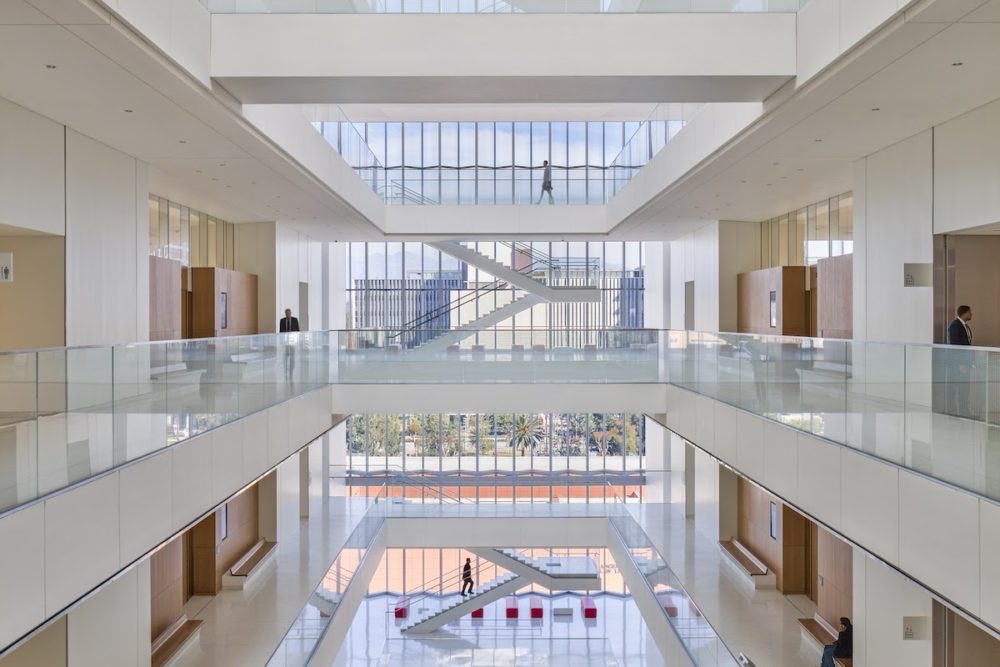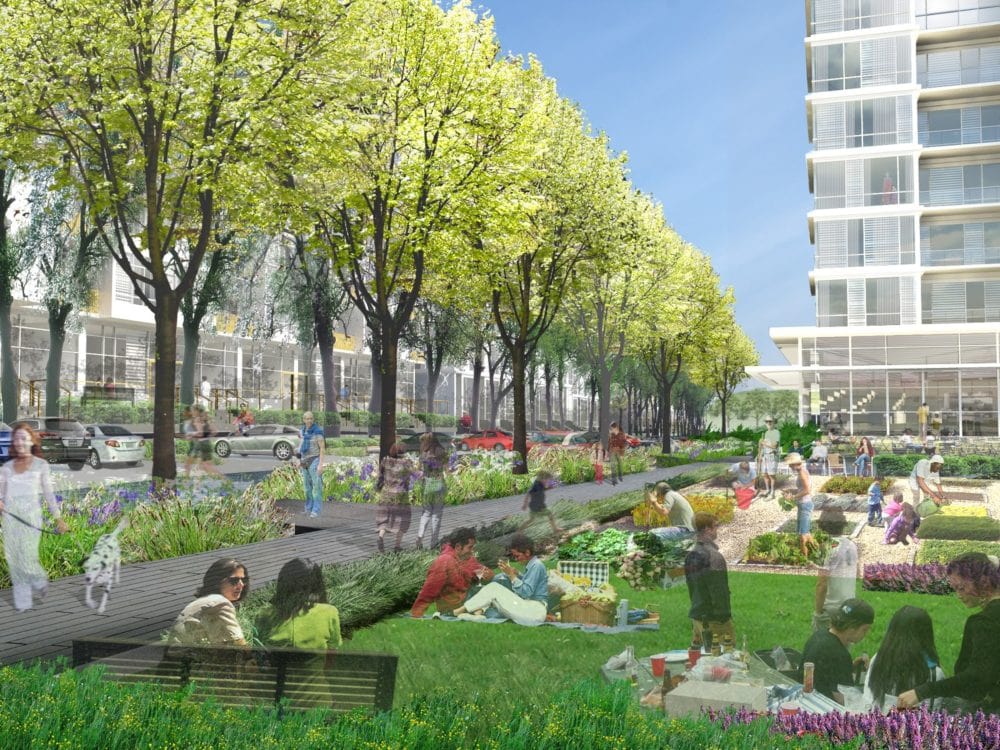Global Architecture & Design Firm SOM on Building for a More Connected, Sustainable World

Los Angeles Federal Courthouse Located in Downtown Los Angeles, California
If you’ve ever traveled in or out of the international terminal at San Francisco Airport, you’ve undoubtedly experienced one of renowned architect Craig Hartman’s most monumental works. A partner of SOM — one of the largest design, engineering and planning firms in the world — Craig has been shaping transformative cityscapes both domestic and abroad. He’s also the visionary behind approximately 25 projects in the Bay Area over the last two decades, including leading the charge with Maximus on Parkmerced, a 150-acre award-winning multifamily community that’s aimed at reshaping how people live. Amid the pandemic, we virtually caught up with Craig to connect over his personal philosophy, how his views find their way into his designs and what lessons we can learn now to prepare us for a post-COVID reality.
It’s said by some that life inspires art and by others that art inspires life. What can you share with us about what inspires you?
I like to observe nature, art, cities and people, but when all these things are brought together, inspiration strikes. My wife, who in addition to being an architect is also a social and political activist, has a value system that is also highly inspirational to me.
From famous sports teams to America’s first craft brewery and the most photographed bridge in the world, San Francisco offers so many iconic attractions. What’s your favorite way to experience the city?
Visiting the S.F. Moma and Symphony and Jazz Center and watching the Blue Angels, which is always a memorable event for my entire family — especially because both my kids’ birthdays fall in the same month. In their earlier years, the Blue Angels would turn their jets perpendicular and fly right down Market Street where our office used to be located.
With architecture, you are responsible for creating a space that human beings occupy, and that space can end up being a very transformative thing in one’s life.

So many of your designs are literal landmarks, such as the U.S. Embassy in Beijing and U.S. Courthouse in Los Angeles. How does it make you feel to take on such high profile projects?
It’s an enormous privilege and responsibility to be an architect. Fortunately I have a powerful group of colleagues who are all extremely talented and take our work seriously. The difference between architecture and art is that, with architecture, you are responsible for creating a space that human beings occupy, and that space can end up being a very transformative thing in one’s life.
At last year’s annual design week in Milan, you spoke on the topic of “Designing Global Cities For A Shrinking Planet.” What were the main points of your speech?
That we should be designing cities to be very open and welcoming. Especially considering our shrinking globe and resources, we need to find more ways to be minimal. Parkmerced is a great example of how to design around these principles.
Many are now saying that one’s local community is more important than ever. What makes the community of Parkmerced, which SOM completed the master plan for, ideal for the world we live in now?
The centerpiece of Parkmerced is about fostering connection, both between people and the surrounding physical environment. It’s compact rather than sprawling, which invites further opportunities for social connection without the need for a car. We believe that walkability invites people to experience a much deeper understanding of a city or place.

Los Angeles Federal Courthouse Located in Downtown Los Angeles, California
How is SOM positioned to deal with the impact of COVID-19?
When SARS appeared in 2002, we were prevented from traveling to meet with our clients in China. To cope, we embraced any and all digital communications that were available at that time. As I reflect on what happened then and what’s happening now, one data point seems clear: the overwhelming need to continue to develop and adopt collaborative digital tools. Working from home is as viable an option as ever as people are no longer bound to their desks and computers.
Maximus allowed us to push the envelope as far as we could possibly push to make Parkmerced an innovative place to live—there were no limits on our creative process.
What’s it like to collaborate with Maximus?
I found the leadership of Maximus to be inspired, passionate and highly supportive. They were well-tuned to the needs of their residents and surrounding community in a genuine way. The owner, Rob, became a real advocate for sustainability, which has always been a primary focus for my designs. Maximus allowed us to push the envelope as far as we could possibly push—there were no limits on our creative process and making Parkmerced a new and innovative place.

Rendering of Parkmerced Located in San Francisco, California
What aspect of Parkmerced are you most proud of?
Getting a project of this size approved was a monumental achievement in and of itself and included enormous involvement from the community with hundreds of meetings. Ultimately, the master plan for Parkmerced was viewed as a positive thing for not just the neighborhood, but the city as a whole. Being able to create a lively place to live, one that provided social and environmental good without added stress on the environment, feels like a victory.
share story
